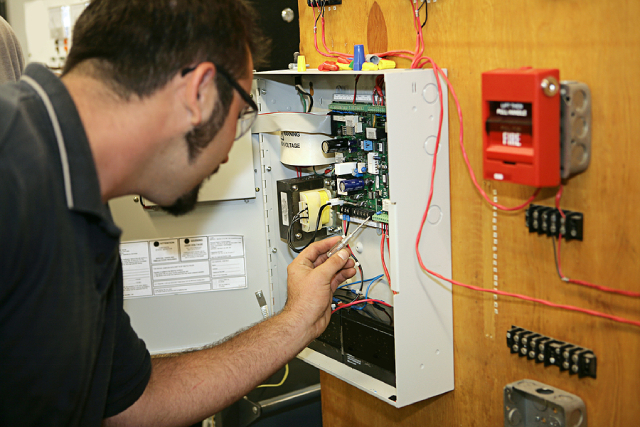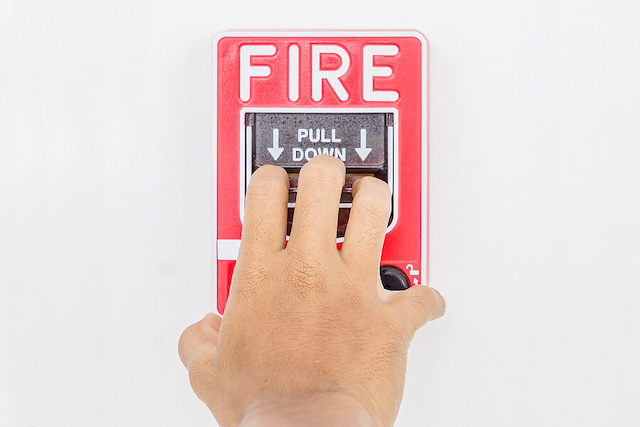Fire alarm systems serve as the first line of defence against fires. Before reacting to an outbreak, one must first know its existence and where it is taking place. However, most people do not realise that fire alarm systems do more than just send out an alert in case of fire. In this article, we cover all the functions of a fire alarm system and how it keeps buildings and occupants safe.
The 4 Main Purposes of Fire Alarm Systems
1. Detect Fire
A fire alarm system is made specifically for detecting fire through smoke and heat. Typically, it can be activated via a manual pull for cases when a fire is detected before its smoke or heat reaches the system’s sensors. Other systems can also be activated when movement is detected in the sprinkler system, which indicates that it is responding to a fire.
2. Alert Occupants of Fire
Once the fire alarm system identifies the smoke and heat signatures common to fires or water movement, it will immediately notify the occupants of a building through visible and audible alarms. They will be impossible to ignore as they are purposefully loud, bright, and obnoxious, prompting individuals to mobilise without delay and follow the established evacuation plan.
3. Mitigate Risks
The fire alarm system works in another way to protect occupants: by deploying control measures in response to potential risks. Once activated, the system performs a series of tasks that mitigate the spread of the fire and smoke and protect the building’s occupants, such as automatically closing doors in different sectors, turning off ventilation systems, or redirecting elevators to designated levels.
4. Notify Relevant Authorities
The last purpose of the fire alarm system is to notify the relevant authorities, especially the fire department, about a fire outbreak. This ensures they are mobilised immediately to the scene as quickly as possible and respond to the fire before it becomes a bigger threat.
The Essential Capabilities of Fire Alarm Systems
All fire alarm systems work to deliver on the functions above, but its capabilities extend beyond simply alerting an outbreak; it can also identify trouble and supervisory conditions.
- Alarm
The alarm condition entails everything outlined in the previous section. Whenever there is an immediate threat of fire, the fire alarm system will raise the alarm, notify occupants of the danger, and inform the fire department about the situation.
- Trouble
The trouble condition states that something is wrong with the fire alarm system. These systems activate the trouble condition to notify fire safety managers or building managers that although there is no immediate danger, it is crucial to inspect and repair some parts of the system.
- Supervisory
The supervisory condition essentially means the system being monitored by the fire alarm has encountered an issue. This problem could be anything from a malfunctioning fire pump to high or low pressure in the suppression system.
Conclusion
Fire alarm system are a significant and intuitive part of the overall fire suppression system that constantly works to keep people and property safe from the threat of fire. As such, it is important to get to know all of its functions as well as keep it maintained and in good working condition.
TenLearn is a platform that hosts e-Learning courses for fire safety managers keen on honing their skills and knowledge in working with fire extinguishing systems. Enrol in an FSM course in Singapore and stay up to date about today’s fire extinguishing system technologies. Apart from valuable knowledge, learners also gain FSM CPD points upon completion of the course.
Don’t hesitate to contact us and learn more about FSM fire safety in Singapore.


Write a public review